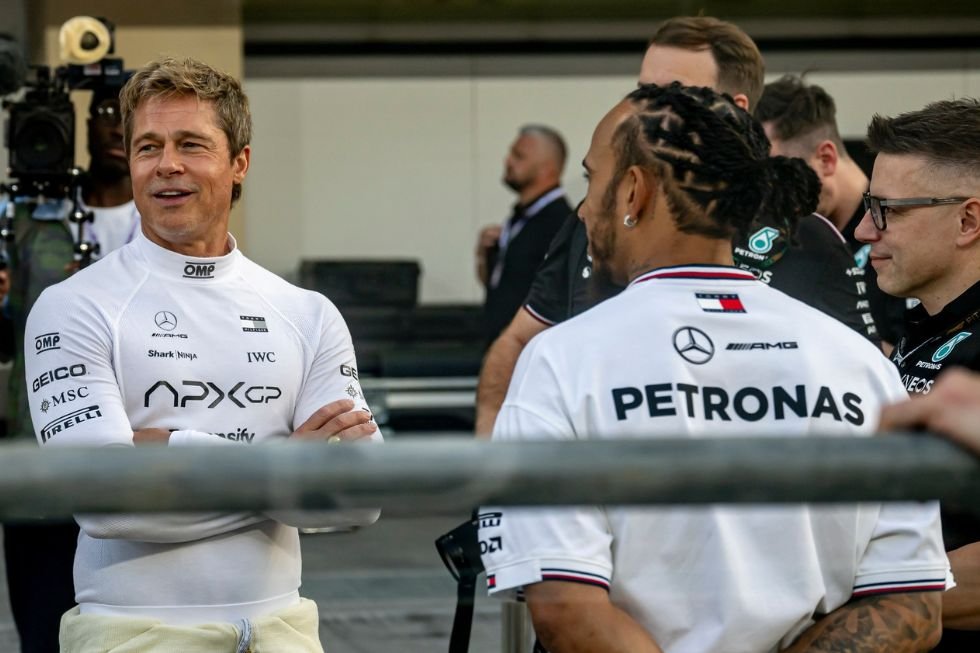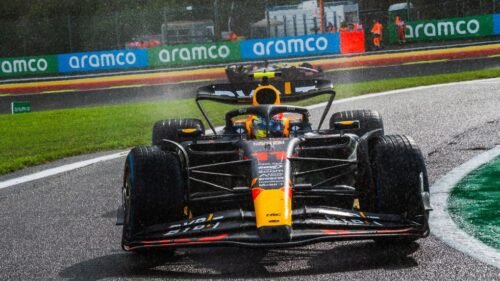In the world of high-speed Formula 1 (F1), leadership isn’t about flair or soap opera decision-making — it’s a calm, team-first process built over years of strategy, data and careful management. While the film F1: The Movie captures the drama and high stakes of the race, it falls short of capturing the institutional depth, shared knowledge and strategic thinking that define outstanding F1 leadership.
In the high-octane world of motorsport, leadership is not just a quality — it’s an authority that drives teams to victory or leaves them stranded amid misery. F1: The Movie, starring Brad Pitt as Sonny Hayes, is a good opportunity to analyze how leadership in such a film compares to leadership in modern-day Formula 1.
Now, this is not an endorsement of Hollywood’s version. Instead, my argument is that while the film depicts some underlying realities about charisma and decision-making under high stakes, it oversimplifies the collaborative, data-driven and political reality of F1 leadership in real life.
The charismatic commander myth
Brad Pitt’s stardom naturally fits the “charismatic hero” archetype: the racing genius or team principal who motivates crew and followers through sheer charisma. This translates well to classic Hollywood storytelling. Our hero, in a fictionalized world of F1, unites the paddock, delivers stirring speeches and achieves success through force of will.
Charisma matters, but F1 success relies far more on depth of organization. Think of Toto Wolff (Mercedes AMG) or Christian Horner (Red Bull Racing): their leadership is defined by strategic vision, commercial acumen and people management as much as by public image. Wolff is not a frontman — he oversees thousands of technical staff, budgetary decisions in hundreds of millions and global logistics. Leadership success here is not spontaneous inspiration, but durable, methodically built performance.
The film puts the spotlight on our hero Sonny Hayes as the unrecognized champion behind racing victories: the one who struggles with the beast under the hood and outsmarts rivals on the pit wall. It’s good cinema: split-second calls, dramatic turnarounds, heroic outcomes.
However, actual F1 leadership is decentralized. Engineers, aerodynamics specialists, data analysts, drivers and even logistics crews all have a voice in each decision. Leadership is not top-down shouting; it is listening to the people in the wind tunnel. The lone genius myth interferes with this decentralized expertise.
Balancing data, drama and long-term strategy
There’s a dramatic moment in the film when our hero is gazing at the race track, sensing the wear in his tires, and betting everything on a mid-race gamble. The scene plays in slow motion, the music swelling.
In actual F1, the race is not won on intuition or chance. It’s won with numbers dancing on screens — real-time tire temperature, weather modeling, changes in wind direction, competitors’ telemetry, simulations that model pit stop times down to the millisecond. Leadership demands literacy in reading the data. Good principals don’t just listen to their gut; they also listen to the data, even when it contradicts intuition. The film’s hero sometimes takes that data baton, but more often, he lets numbers support dramatic intuition. Then again, that’s Hollywood.
For drama, the screenplay might add high-stakes interpersonal conflict: a driver’s rebellion, behind-the-scenes politics or a rival team spy intrigue. In F1, Hayes storms out of a meeting, challenging all to stand with him: “Either you’re with me or against me.”
While F1 is full of tension, most leadership failures aren’t the result of betrayals, but institutional rigidity. Keeping engineers focused through a revolution in rules, balancing championship aspirations with sponsor demands, maintaining driver morale over a 23-race season — it’s a management marathon. When teams go off the rails, there is rarely a “betrayal”; more often, it is a gradual leak: development deadlines missed, budget cap issues or misreading the rules. So, the notion of a hero shaking the room to repair everything? Cinematic and not realistic.
The denouement of the film has Pitt delivering a fiery lap to snatch victory for himself and his team, culturally. But F1 leadership isn’t one race. It’s dynasties. Think of Red Bull. Its first world title as a constructor was in 2010, yet its ascendancy gelled post-2021, after decades of structured investment. Adaptive leadership, which learns season to season and reacts to changes in regulations and constant innovation, reaps long-term greatness — conquering two races in a row? That’s impressive. Building a championship-winning organization? That takes years, not moments.
Art vs. engineering
Film and sport have different rules. A drama about F1 can inspire and excite. But when Hollywood boils leadership down to charisma and ad hoc heroism, it ignores what makes the real sport so compelling: the relentless pursuit of perfection through discipline, data, culture and collective greatness.
Although I enjoyed watching it, if viewers take away the notion that leadership is a lone, bellowing lion in front of the podium, then they misunderstand Formula 1. It isn’t in that single, dramatic moment that success lies, but in the detailed, unsung laboratories, the wind tunnels, the endless debriefs.
F1 leadership is not a spotlight — it’s a constantly shifting, data-driven symphony of minds toward a shared finish line. That, perhaps, is the more difficult and admirable hero’s journey.
[Kaitlyn Diana edited this piece.]
The views expressed in this article are the author’s own and do not necessarily reflect Fair Observer’s editorial policy.
Support Fair Observer
We rely on your support for our independence, diversity and quality.
For more than 10 years, Fair Observer has been free, fair and independent. No billionaire owns us, no advertisers control us. We are a reader-supported nonprofit. Unlike many other publications, we keep our content free for readers regardless of where they live or whether they can afford to pay. We have no paywalls and no ads.
In the post-truth era of fake news, echo chambers and filter bubbles, we publish a plurality of perspectives from around the world. Anyone can publish with us, but everyone goes through a rigorous editorial process. So, you get fact-checked, well-reasoned content instead of noise.
We publish 3,000+ voices from 90+ countries. We also conduct education and training programs
on subjects ranging from digital media and journalism to writing and critical thinking. This
doesn’t come cheap. Servers, editors, trainers and web developers cost
money.
Please consider supporting us on a regular basis as a recurring donor or a
sustaining member.
Will you support FO’s journalism?
We rely on your support for our independence, diversity and quality.








Comment
Thank you Baptiste, this is a very thoughtful critique of the film. It is indeed pushing an agenda, that of the charismatic leader. This agenda has proven dangerous and even harmful more than once, you’re doing a good job pointing it out!